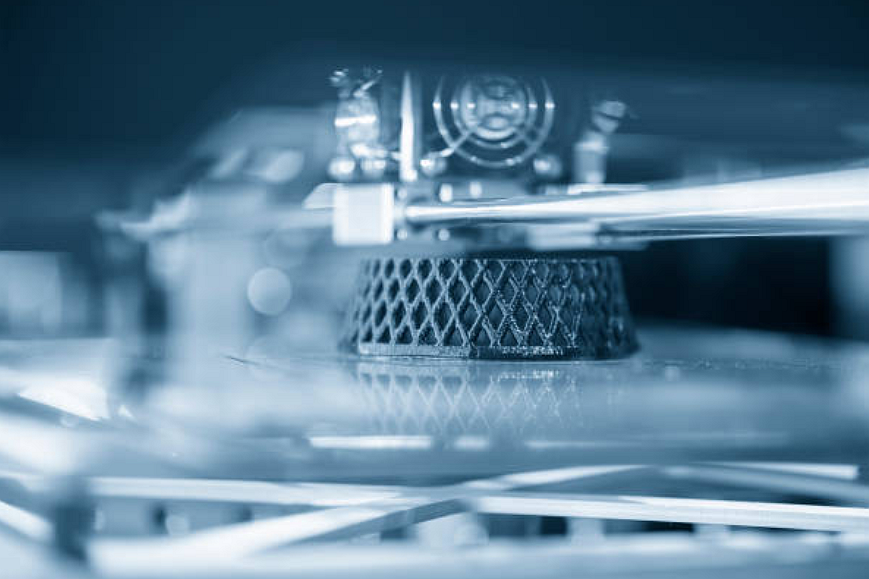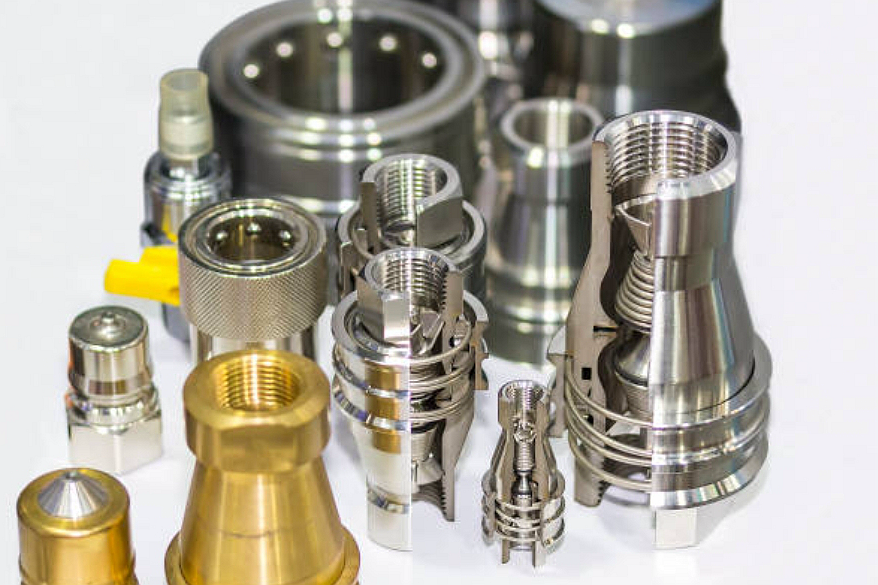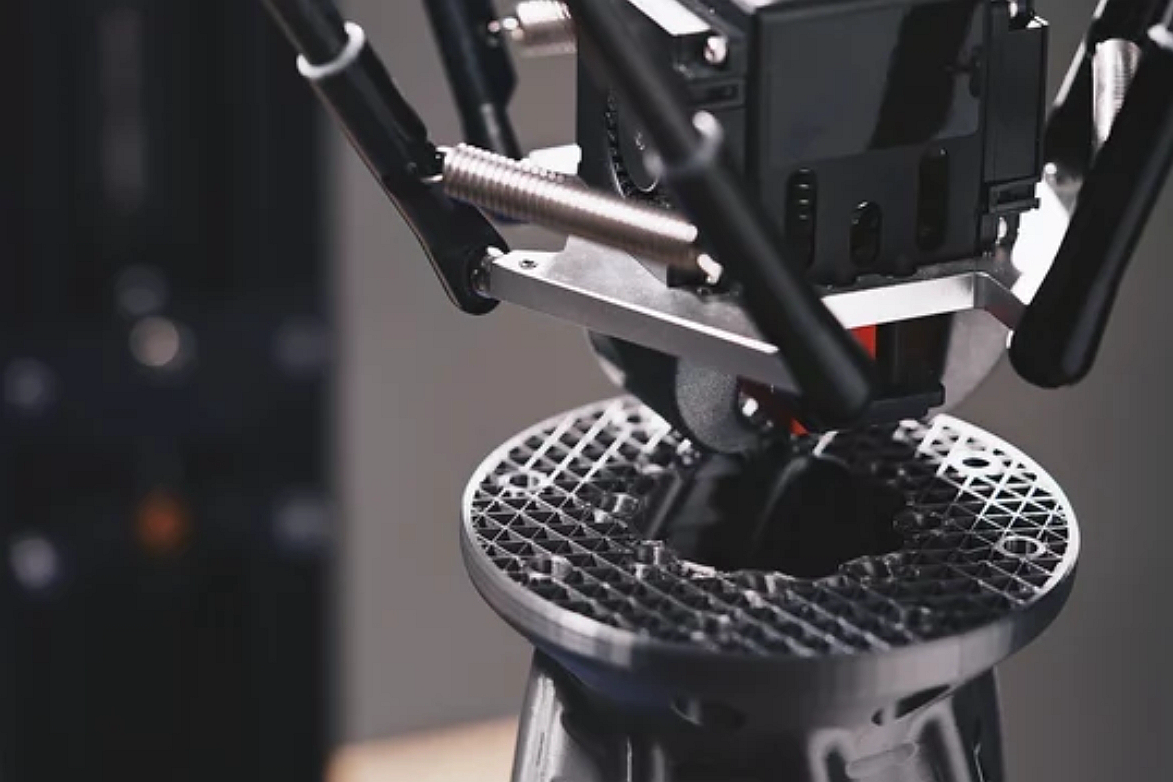AlSi10Mg
Basic Description of AlSi10Mg Powder
AlSi10Mg is a widely used aluminum alloy in additive manufacturing, known for its excellent casting properties and the ability to produce parts with good strength and thermal properties. This alloy typically comprises aluminum, silicon, and magnesium, where silicon and magnesium are the primary alloying elements. The addition of silicon improves the fluidity and reduces the shrinkage of the metal during the solidification process, making it ideal for casting complex geometries. Conversely, magnesium enhances the strength and improves the alloy's response to heat treatments.
The alloy is predominantly used in powder form for 3D printing applications. It is known for creating lightweight parts that maintain good dimensional stability and high detail resolution. AlSi10Mg powder is particularly notable for its excellent corrosion resistance and good mechanical properties post-heat treatment, which makes it an attractive option for both prototyping and functional end-use parts.
AlSi10Mg Similar Grades
AlSi10Mg is unique but can be compared to other aluminum alloys with similar compositions and applications. For instance, AlSi7Mg and AlSi12 are closely related alloys in similar manufacturing contexts. Both alternatives offer slightly different balances in terms of strength, flexibility, and casting characteristics:
AlSi7Mg is known for its higher flexibility than AlSi10Mg, making it suitable for parts requiring more flexibility and impact resistance. It is commonly used in automotive applications where parts may undergo more dynamic stresses.
AlSi12 features a higher silicon content, which provides even better fluidity during casting but with lower mechanical strength, making it well-suited for parts where intricate designs and fine details are more critical than load-bearing capacities.
AlSi10Mg 3D Printed Applications
AlSi10Mg powder is a versatile aluminum alloy widely recognized for its strong performance in various manufacturing applications. Thanks to its excellent mechanical properties and ease of processing, this alloy finds utility in multiple sectors, from aerospace to automotive to consumer goods. Here, we delve into some specific applications that showcase the breadth of AlSi10Mg's capabilities.
Automotive Industry
AlSi10Mg is utilized extensively in the automotive sector, where performance and weight are crucial. It is employed in the production of:
Engine Components include gearbox parts and pump components, where the alloy's good casting properties and strength at high temperatures play a vital role.
Structural Components: Including chassis elements and body parts, where reducing vehicle weight with AlSi10Mg can lead to better fuel efficiency and reduced emissions.
Medical Devices
The medical sector benefits from the biocompatibility and corrosion resistance of AlSi10Mg, particularly in:
Surgical Instruments: Tools and devices benefit from the alloy's strength and lightweight, making them easier to handle during long surgeries.
Implants: Certain prosthetics and implants are manufactured using AlSi10Mg because they have good mechanical properties and biocompatibility, ensuring patient safety and longevity.
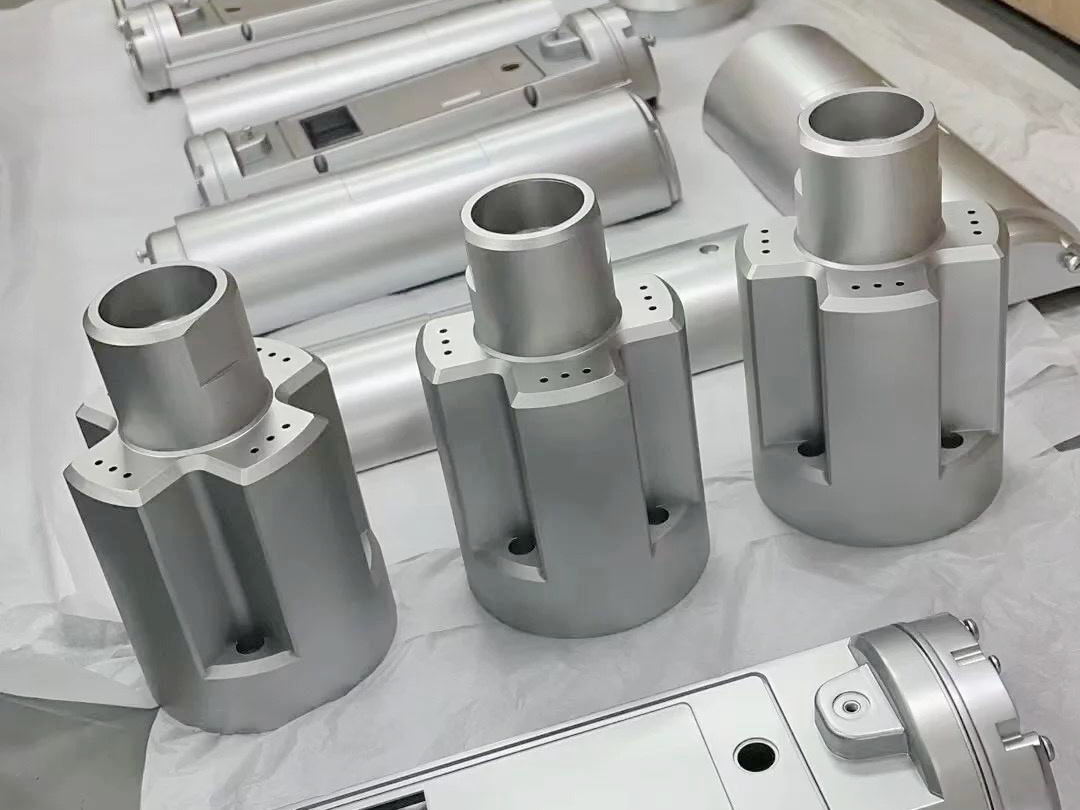
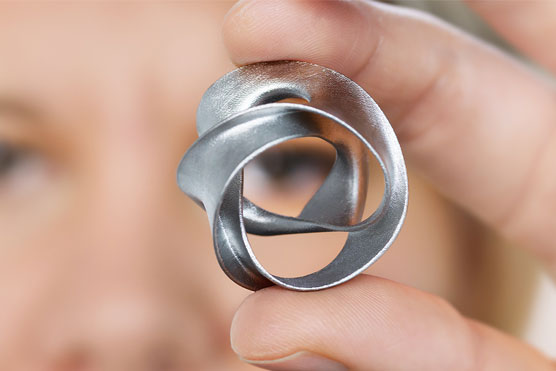
Aerospace Components
In the aerospace industry, weight reduction is paramount, and AlSi10Mg alloy is ideally suited to meet this requirement. Its light weight combined with good strength and thermal properties makes it an excellent choice for manufacturing components such as:
Brackets and Fittings: These parts benefit from the lightweight and corrosion-resistant nature of AlSi10Mg, contributing to overall weight reduction in aircraft without compromising durability.
Engine Parts: Components like engine mounts, housings, and other non-critical engine parts are often made from AlSi10Mg due to their excellent thermal properties and resistance to high temperatures.
Consumer Electronics
In the fast-paced consumer electronics market, AlSi10Mg is valued for its aesthetic finish and durability in:
Laptop Frames and Components: Where the alloy's light weight and strength ensure protection and portability.
Mobile Phone Cases and Components: Utilizing AlSi10Mg for parts requiring a high strength-to-weight ratio and excellent thermal properties to dissipate heat effectively.
Custom Art and Design
AlSi10Mg's ability to be finely cast makes it suitable for:
Jewelry and Fine Art Pieces: These are where intricate designs can be created with a high level of detail and smooth surface finish, making them ideal for sophisticated, custom pieces.
The diverse applications of AlSi10Mg powder across various industries highlight its versatility and efficacy in meeting specific technical requirements. Its combination of light weight, strength, and resistance to corrosion and high temperatures makes it a preferred choice for manufacturers looking to optimize the performance and durability of their products. Whether in high-stress environments like aerospace and automotive or detailed work in art and consumer electronics, AlSi10Mg stands out as a material that brings functionality and innovation to the manufacturing table.
AlSi10Mg Composition and Properties
AlSi10Mg is an aluminum alloy known for its impressive combination of mechanical properties and ease of use in various manufacturing processes, especially in additive manufacturing. Understanding the composition and inherent properties of AlSi10Mg is crucial for appreciating why it is favored for such a wide range of applications.
Composition of AlSi10Mg
AlSi10Mg consists primarily of aluminum, complemented by significant amounts of silicon and magnesium:
Aluminum (Al): As the base metal, aluminum contributes to the alloy’s lightweight and good corrosion resistance.
Silicon (Si): Typically around 10% of the alloy, silicon improves the aluminum’s castability and fluidity during the melting process. It also enhances wear resistance and contributes to the hardness of the alloy.
Magnesium (Mg): Usually close to 1%, magnesium works with silicon to strengthen the alloy by forming magnesium silicide (Mg2Si), which forms during heat treatment to improve strength and hardness.
Trace elements such as iron, copper, and zinc might also be in much smaller quantities. These elements can influence the alloy’s strength, machinability, and other properties.
Mechanical Properties
Tensile Strength: AlSi10Mg typically exhibits a tensile strength in the range of 240 to 290 MPa, making it suitable for parts that experience moderate stress.
Yield Strength: The yield strength of AlSi10Mg can range from 140 to 180 MPa, indicating good structural integrity under load.
Elongation: This alloy maintains a fair elongation at a break of about 1-3%, which suggests that while it is relatively strong, it has limited flexibility compared to other aluminum alloys.
Hardness: AlSi10Mg is also recognized for its good hardness, which enhances its wear resistance.
Thermal Properties
Melting Point: AlSi10Mg has a melting point of around 560-590°C, which is relatively low and beneficial for reducing energy consumption during manufacturing.
Thermal Conductivity: The thermal conductivity of this alloy is moderate, making it suitable for applications where heat dissipation is necessary but not critical.
Corrosion Resistance
AlSi10Mg offers excellent corrosion resistance, particularly against atmospheric conditions. It performs well in marine environments, which makes it a preferred material in naval and coastal applications.
The unique composition of AlSi10Mg provides a balanced set of mechanical and thermal properties that make it highly adaptable and practical for various applications. From its good strength and hardness to its excellent corrosion resistance and relatively low melting point, AlSi10Mg stands out as a versatile material in the manufacturing sector. Its suitability for traditional casting methods and modern additive manufacturing techniques further enhances its appeal across industries, ensuring its role as a critical material in producing durable, high-quality parts.
AlSi10Mg Powder Characteristics
AlSi10Mg powder is tailored for advanced manufacturing techniques, particularly metal powders, such as 3D printing. The specific characteristics of this powder, including its mechanical properties like yield strength, tensile strength, and elongation, are essential for understanding its behavior under manufacturing conditions and its performance in final products.
Yield Strength
Yield Strength: AlSi10Mg powder typically shows a yield strength of approximately 140 to 180 MPa. This measurement indicates the stress at which a material begins to deform plastically. The high yield strength of AlSi10Mg ensures that parts made from this material can withstand significant loads without permanently deforming, making it ideal for structural components in aerospace and automotive applications.
Tensile Strength
Tensile Strength: The tensile strength of AlSi10Mg can range from 240 to 290 MPa. This property measures the alloy's ability to withstand loads without failing under tension. High tensile strength is critical for applications where the material must endure high operational stresses, such as engine parts and mechanical assemblies.
Elongation
AlSi10Mg demonstrates an elongation at a break of about 1-3%. Elongation measures ductility, indicating how much a material can stretch before it breaks. While AlSi10Mg is not the most pliable material, its moderate elongation allows for some flexibility in parts, which is beneficial in preventing brittle failure under stress.
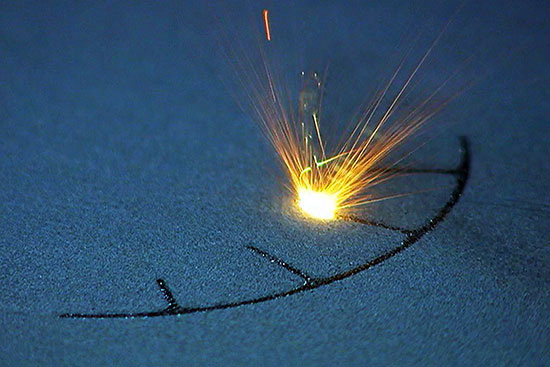
Powder Particle Characteristics
Understanding the particle characteristics of AlSi10Mg powder is also crucial as it affects the flowability, packing density, and the final part's surface quality:
Particle Size Distribution: AlSi10Mg powder particles typically range in size from 20 to 50 microns, which is optimal for most powder bed fusion 3D printers. This size range ensures good flowability and high packing density, critical for achieving uniform layers during printing.
Sphericity: The particles are generally spherical, enhancing flow characteristics and minimizing the risk of clogging in the printer's feeding system. High sphericity contributes to consistent layer thickness and uniform melting and solidification during the SLM process.
Particle Morphology: The smooth surface morphology of AlSi10Mg particles also contributes to their excellent flowability and uniform heat distribution during the laser melting process, which is pivotal for achieving parts with high dimensional accuracy and mechanical integrity.
The powder characteristics of AlSi10Mg, including its mechanical and particle properties, make it highly suitable for precision manufacturing processes like selective laser melting. Its high yield strength, suitable tensile strength, and moderate elongation ensure that the manufactured parts perform well under operational stresses. Meanwhile, the optimal particle size distribution, sphericity, and morphology of the powder facilitate efficient and reliable processing, leading to high-quality final products with minimal defects. Understanding these characteristics allows manufacturers to better predict the behavior of AlSi10Mg in various manufacturing scenarios and tailor the processing conditions to optimize the performance of the finished parts.
AlSi10Mg Physical Properties
AlSi10Mg powder is renowned for its suitability in high-precision manufacturing processes and distinctive physical properties. These characteristics ensure the alloy's performance under various conditions and compatibility with specific manufacturing requirements. This section details the critical physical properties of AlSi10Mg powder that make it a preferred choice for advanced manufacturing applications.
Density
Density: The typical density of AlSi10Mg alloy is approximately 2.67 g/cm³. This relatively low density benefits applications where weight reduction is crucial, such as in the aerospace and automotive sectors, contributing to overall efficiency and performance enhancements.
Hardness
Hardness: AlSi10Mg exhibits a hardness of approximately 120 HB (Brinell Hardness). This hardness makes it resistant to surface wear and abrasion, which is vital for parts exposed to rigorous operational environments.
Specific Surface Area
Specific Surface Area: The specific surface area of AlSi10Mg powder influences its reactivity and sintering behavior. A larger surface area allows for better sintering and bonding of particles under heat, which is crucial for achieving solid and dense parts.
Sphericity
Sphericity: The powder particles' high sphericity ensures excellent flowability and uniform layering during the 3D printing process. This trait is critical for maintaining consistent printing conditions and achieving high-quality surface finishes.
Bulk Density
Bulk Density: AlSi10Mg powder typically shows good bulk density values, which enhance the powder's packing behavior and stability in the printer's build chamber. This property helps achieve uniform density across the manufactured parts, reducing porosity and improving mechanical properties.
Hall Flow Rate
Hall Flow Rate: The Hall flow rate of AlSi10Mg powder indicates its flow characteristics. A suitable flow rate is essential for ensuring the powder can be efficiently and reliably dispensed during printing, avoiding clogs, and ensuring consistent deposition.
Melting Point
Melting Point: AlSi10Mg has a melting point of 560-590°C, significantly lower than many other metals and alloys. This lower melting point reduces manufacturing energy consumption and allows faster processing times.
Relative Density
Relative Density: This alloy typically achieves a relative density of 99% or higher when processed under optimal conditions in additive manufacturing, signifying minimal porosity and high structural integrity of the final parts.
Recommended Layer Thickness
Recommended Layer Thickness: For AlSi10Mg, the recommended layer thickness during 3D printing ranges from 20 to 50 microns, which balances detail resolution and build speed.
Thermal Expansion Coefficient
Thermal Expansion Coefficient: AlSi10Mg has a thermal expansion coefficient of approximately 21.0 µm/m-K, essential for understanding how parts behave under temperature changes during use.
Thermal Conductivity
Thermal Conductivity: The alloy's thermal conductivity is about 96-120 W/m-K, making it suitable for components where heat dissipation is critical, such as electronic housings and automotive heat exchangers.
The physical properties of AlSi10Mg powder, from its density and hardness to its thermal characteristics and flow rates, make it an exceptionally versatile material for additive manufacturing. These properties facilitate the production process and ensure that the final parts meet the stringent requirements of aerospace, automotive, and healthcare industries. Understanding these physical attributes allows manufacturers to optimize their design and production strategies, ensuring that they fully capitalize on the benefits offered by AlSi10Mg in their specific applications.
Manufacturing With AlSi10Mg
AlSi10Mg powder is exceptionally versatile and suitable for various advanced manufacturing techniques. Each method leverages the unique properties of AlSi10Mg to produce parts that meet specific industry standards and application requirements. This section explores the different manufacturing processes that can utilize AlSi10Mg, compares the resulting parts, and discusses common issues and solutions associated with these techniques.
Suitable Manufacturing Processes for AlSi10Mg
3D Printing (Selective Laser Melting - SLM): SLM is particularly effective with AlSi10Mg due to its precision in producing complex geometries with great detail and minimal waste. It's ideal for producing lightweight, structurally complex components for aerospace and automotive applications.
Metal Injection Molding (MIM): MIM is used for mass-producing small, intricate parts like automotive components and consumer electronics parts, where the refined detail capabilities of AlSi10Mg are beneficial.
Powder Compression Molding: This technique is less common but valuable for producing large quantities of geometrically simple parts quickly and economically.
Hot Isostatic Pressing (HIP): HIP is used to improve mechanical properties and eliminate porosity in parts made from AlSi10Mg, enhancing their density and strength.
CNC Machining: Post-processing of AlSi10Mg parts, especially those made through SLM, often involves machining to achieve precise tolerances and high-quality surface finishes.
Comparison of Parts Produced by These Manufacturing Processes
Surface Roughness: Parts produced via SLM tend to have a rougher surface than those made through MIM or CNC machining, which typically yields smoother finishes.
Tolerances: CNC machining offers the highest tolerances, while SLM and MIM provide moderate to high tolerances suitable for most applications.
Internal Defects: SLM and MIM parts may exhibit some porosity; however, HIP can significantly reduce these internal defects.
Mechanical Properties: HIP-processed parts often exhibit superior mechanical properties due to the elimination of internal porosities and enhanced material density.
Compactness: Parts made through HIP and CNC machining generally show higher compactness and uniformity than those produced by SLM or MIM.
Common Issues and Solutions in Manufacturing with AlSi10Mg
Surface Treatment: SLM-produced parts may require additional surface treatments such as sandblasting or chemical finishing to improve surface roughness.
Heat Treatment: Heat treatment is often necessary to relieve residual stresses and enhance the mechanical properties of parts made from AlSi10Mg, regardless of the manufacturing process.
Tolerance Achievement: Achieving tight tolerances with SLM can be challenging; post-process machining is frequently required to meet precise specifications.
Deformation Problems: Parts are susceptible to deformation due to residual stresses during cooling; proper support design and strategic orientation during printing can mitigate this issue.
Cracking Problems: Optimizing the laser parameters and maintaining a consistent build environment is critical to prevent cracking, particularly in SLM.
Detection Methods: Advanced inspection techniques such as CT scanning are recommended to detect any internal defects or inconsistencies within the part.
